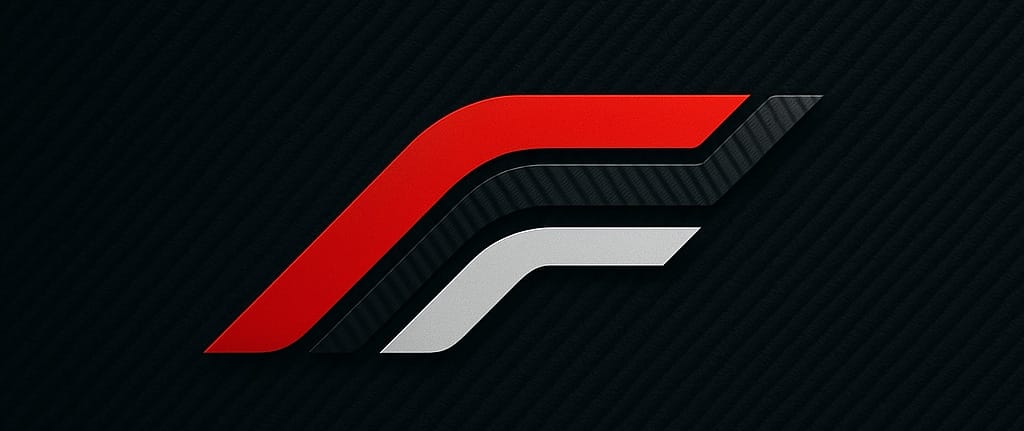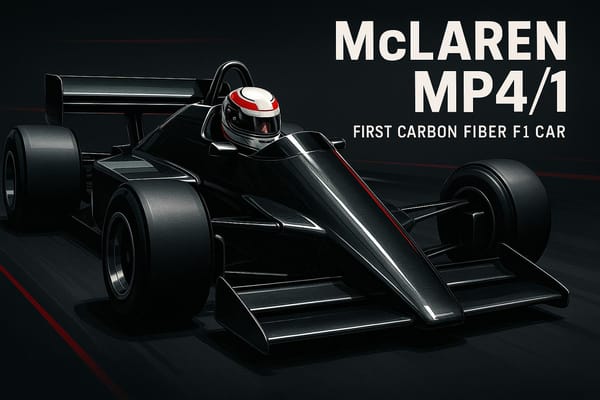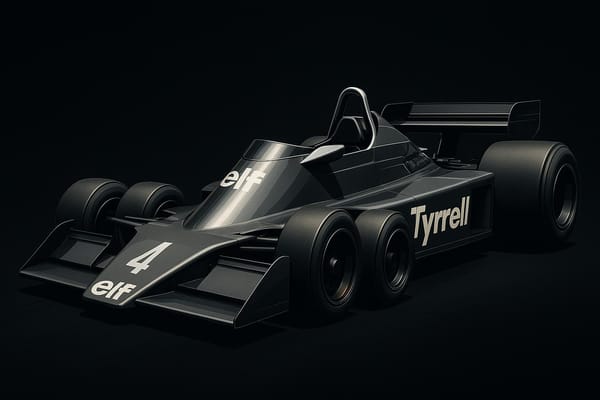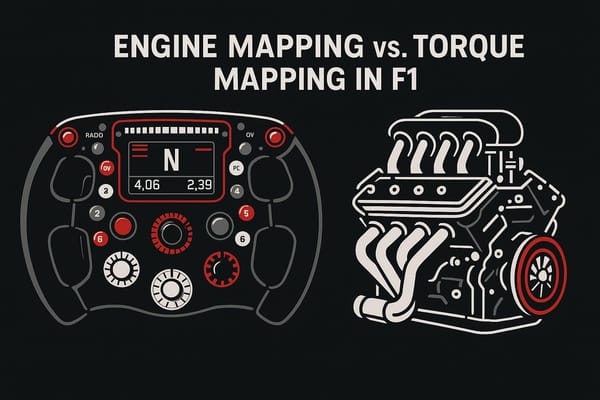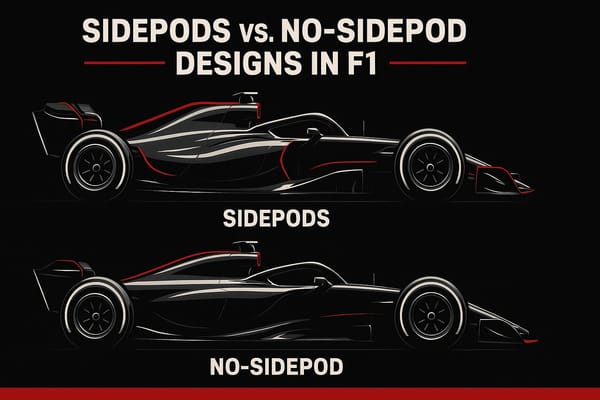How Teams Adapt Aerodynamics for Spa and Monza
Explore how F1 teams adapt their aerodynamic setups for the unique challenges of Spa-Francorchamps and Monza to maximize performance.
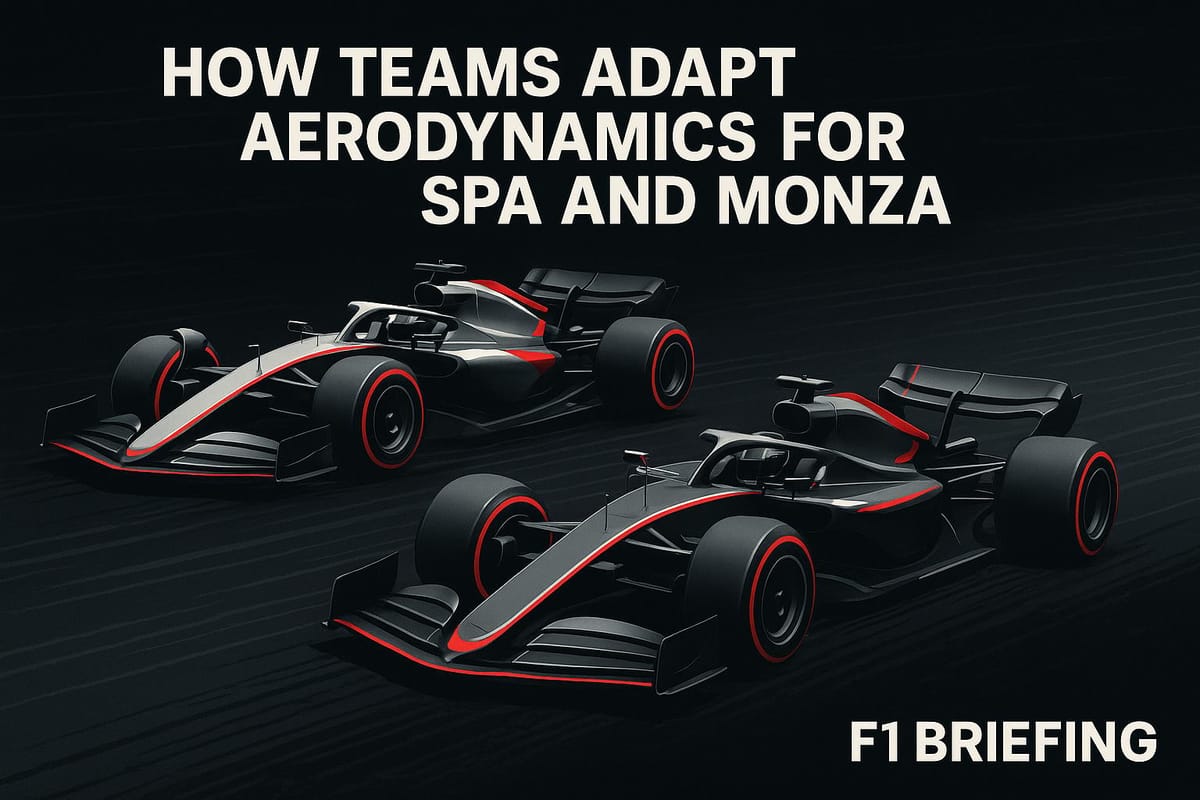
F1 teams face two very different aerodynamic challenges at Spa-Francorchamps and Monza. Spa demands a balance between high downforce for corners and low drag for straights, while Monza prioritizes reducing drag to maximize straight-line speed. Here’s a quick breakdown:
- Spa-Francorchamps: Medium-high downforce setup for handling tight corners like Eau Rouge while maintaining speed on straights. Engineers adjust both front and rear wings for stability and grip.
- Monza: Low-drag setup with minimal wing angles to prioritize speed on long straights. Stiffer suspensions help maintain control despite reduced downforce.
These setups highlight the trade-off between speed and cornering grip, with engineers fine-tuning configurations for optimal performance at each track.
F1 Low Drag Rear Wings: The Secret for Spa and Monza!
1. Spa-Francorchamps Wing Setup
At Spa-Francorchamps, teams typically use a medium-high downforce setup to strike a balance between cornering grip and straight-line speed. This setup is crucial for handling the track's mix of fast straights and challenging turns, requiring precise adjustments to both the front and rear wings.
Engineers fine-tune the front wing to manage airflow effectively, ensuring the car remains aerodynamic while keeping drag to a minimum. Meanwhile, the rear wing is adjusted to provide stability during high-speed corners without adding unnecessary resistance.
Given Spa's unique layout, wing settings are often adjusted throughout the weekend. Teams constantly refine these configurations to adapt to changing track conditions and maximize performance.
2. Monza Low-Drag Configuration
At Monza, teams focus on a low-drag aerodynamic setup to maximize speed on the circuit's long straights, which dominate over its minimal high-speed corners. Unlike Spa's setup, which balances cornering and straight-line performance, Monza prioritizes raw speed.
To achieve this, teams reduce drag by lowering wing angles and using simplified rear wing designs that retain just enough downforce for stability. With less aerodynamic grip, engineers rely on fine-tuning suspension settings to enhance mechanical grip for key areas like the Parabolica and heavy braking zones. Adjustments to ride height and stiffness ensure the car remains stable despite the reduced downforce.
This setup is a sharp departure from configurations used at tracks like Spa, emphasizing the trade-off between straight-line speed and maintaining control in corners. These compromises play a crucial role in overall performance.
Performance Trade-offs
The aerodynamic demands of Spa-Francorchamps and Monza lead to noticeable performance contrasts. At Spa, teams opt for medium-downforce setups to strike a balance between cornering grip and straight-line speed. This setup helps drivers handle the track's challenging curves while staying competitive on the straights.
Monza, on the other hand, requires a low-downforce configuration to prioritize straight-line speed. However, this comes at the cost of reduced cornering grip. To compensate, teams use stiffer suspension setups to address the lack of aerodynamic support, whereas Spa calls for more balanced mechanical adjustments.
To fine-tune performance, teams pair these aerodynamic setups with mechanical tweaks. At Spa, subtle suspension adjustments enhance grip and stability, while at Monza, stiffer configurations are essential for maintaining control.
These technical choices directly affect race strategy, influencing tire wear, fuel consumption, and power unit settings. The careful balance between aerodynamics and mechanical grip highlights the precision engineering required at these legendary tracks.
Conclusion
Spa-Francorchamps and Monza represent two extremes in Formula One's aerodynamic demands, each requiring tailored technical setups. Spa calls for medium-downforce configurations to maintain balance through its mix of high-speed and technical sections. Monza, on the other hand, pushes teams to prioritize low-drag setups for maximum speed on its long straights. This highlights the constant trade-off between cornering grip and straight-line velocity.
These track-specific aerodynamic adjustments showcase the sport's ongoing technical evolution. The unique challenges posed by these legendary circuits illustrate why Formula One continues to lead in motorsport engineering, as teams refine strategies to tackle each track's demands.
The innovations developed for these circuits not only improve race performance but also advance aerodynamic understanding within the tight constraints of F1 regulations. Spa and Monza, with their vastly different requirements, embody the teams' relentless drive to excel, setting the stage for further breakthroughs throughout the racing season.
FAQs
How do F1 teams adjust their aerodynamics for tracks like Spa and Monza with very different characteristics?
F1 teams adapt their aerodynamics for Spa-Francorchamps and Monza by tailoring their setups to the unique demands of each circuit. Spa requires a balance between straight-line speed and cornering grip due to its mix of long straights and high-speed corners. Teams often use medium downforce setups to ensure stability without sacrificing too much speed.
Monza, on the other hand, is known as the 'Temple of Speed' and demands minimal drag for maximum straight-line performance. Teams typically opt for low downforce wing configurations to reduce air resistance, even if it compromises cornering ability. These adjustments are crucial for optimizing lap times and overall race performance on such contrasting tracks.
What unique challenges do teams face when fine-tuning car setups for Monza's high-speed layout?
Monza, known as the 'Temple of Speed,' presents unique challenges for F1 teams due to its high-speed straights and minimal cornering demands. To maximize performance, teams reduce aerodynamic drag by using low-downforce wing configurations, which help achieve higher top speeds. However, this compromises cornering grip and stability, requiring a delicate balance in setup.
Additionally, the long straights and heavy braking zones at Monza demand precise brake cooling management and efficient tire performance. Teams must also consider engine reliability, as Monza's layout puts significant strain on power units due to prolonged periods at full throttle.
How do aerodynamic adjustments at Spa and Monza impact tire wear and fuel efficiency during a race?
Aerodynamic changes at Spa and Monza significantly influence tire wear and fuel efficiency due to the contrasting demands of these circuits. At Spa, teams often use medium to high downforce setups to handle the track's mix of high-speed corners and elevation changes, which can lead to increased tire degradation but improve cornering grip. In contrast, Monza's emphasis on straight-line speed pushes teams to adopt low downforce configurations, reducing drag and fuel consumption but placing greater stress on braking zones and tire management.
These adjustments require careful balancing, as too much downforce at Spa could overwork the tires, while too little at Monza might compromise stability in corners. Teams rely on simulations and real-time data to find the optimal setup for each race, ensuring both performance and efficiency are maximized.
